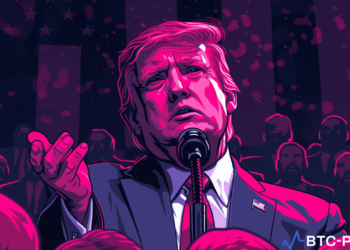As of recent days, Bitcoin and the majority of the crypto ecosystem, have experienced a rally a mid the likeliness of bull markets returning. On the other hand, as a result of Powell not pushing back hard enough, the markets are now surging strongly in his face. Considering that J-Pow hasn’t provided any serious pushback, markets are unlikely to stop moving until really hot data is released (or recessionary).
Today, we got very important news.
Markets don't believe Powell, at all.
A thread.
1/
— Alf (@MacroAlf) February 1, 2023
Powel: Why the recession rate is unlikely to return to 2%
The first stages of a recession, which has been causing worries all over, almost always provide the impression of a smooth landing since economic growth and inflation both begin to slow but have not yet reached levels that are cause for concern. It is credible that Powell’s lack of resistance against easing financial conditions adds gasoline to the flames as markets blindly accept the notion of a gentle landing.
According to Powell, more substantial evidence is needed to be confident that inflation will return to 2%, in particular as we see core non-housing services inflation still running at 4% annualized with no progress there. This is the case because we are observing that there has been no progress there.
Powell said that inflation might be more enduring in this sticky area, which indicated that more action was required.
Even if there is a definite decreasing trend, Powell made it apparent that he is dissatisfied with the current state of affairs. The rate of change in the core services CPI on an annualized basis for the last six months has fallen to 4%.
The composition of this downward move (seen in the figure on the right) is in fact rather complicated due to the deflation in medical care costs, which accounted for a significant chunk of it. However, Powell did not even slightly sound the all-clear yet, notwithstanding the progress that has been made regarding inflation. All in all, the Fed will need to clear a lot of hurdles before it can properly pivot.
How recession rates affect cryptocurrencies
In times of economic turmoil, when traditional assets like stocks, bonds, and fiat currency may decrease in value, cryptocurrencies like Bitcoin are often seen as a hedge against economic and geopolitical uncertainty due to their decentralized nature, lack of borders, and ability to be used as a store of value. It’s also worth noting that many cryptocurrencies have a limited supply, creating a scarcity factor that might boost demand in times of economic turmoil. It’s important to keep in mind, however, that cryptocurrencies belong to the highly speculative and potentially volatile asset class of digital currency.
Bitcoin’s price and its correlation with economic downturns are not always linear. One possible explanation for Bitcoin’s price increase during times of economic uncertainty and volatility is that some individuals see it as a safe-haven asset. However, if the economy were to enter a deep and protracted recession, demand for all assets, including Bitcoin, might fall, bringing the price of Bitcoin down with it. Supply and demand variables, such as investor mood, legislative changes, technical progress, and macroeconomic events, all have a role in determining Bitcoin’s price. Keep in mind that Bitcoin and other cryptocurrencies are still extremely speculative and may see large swings in value.










